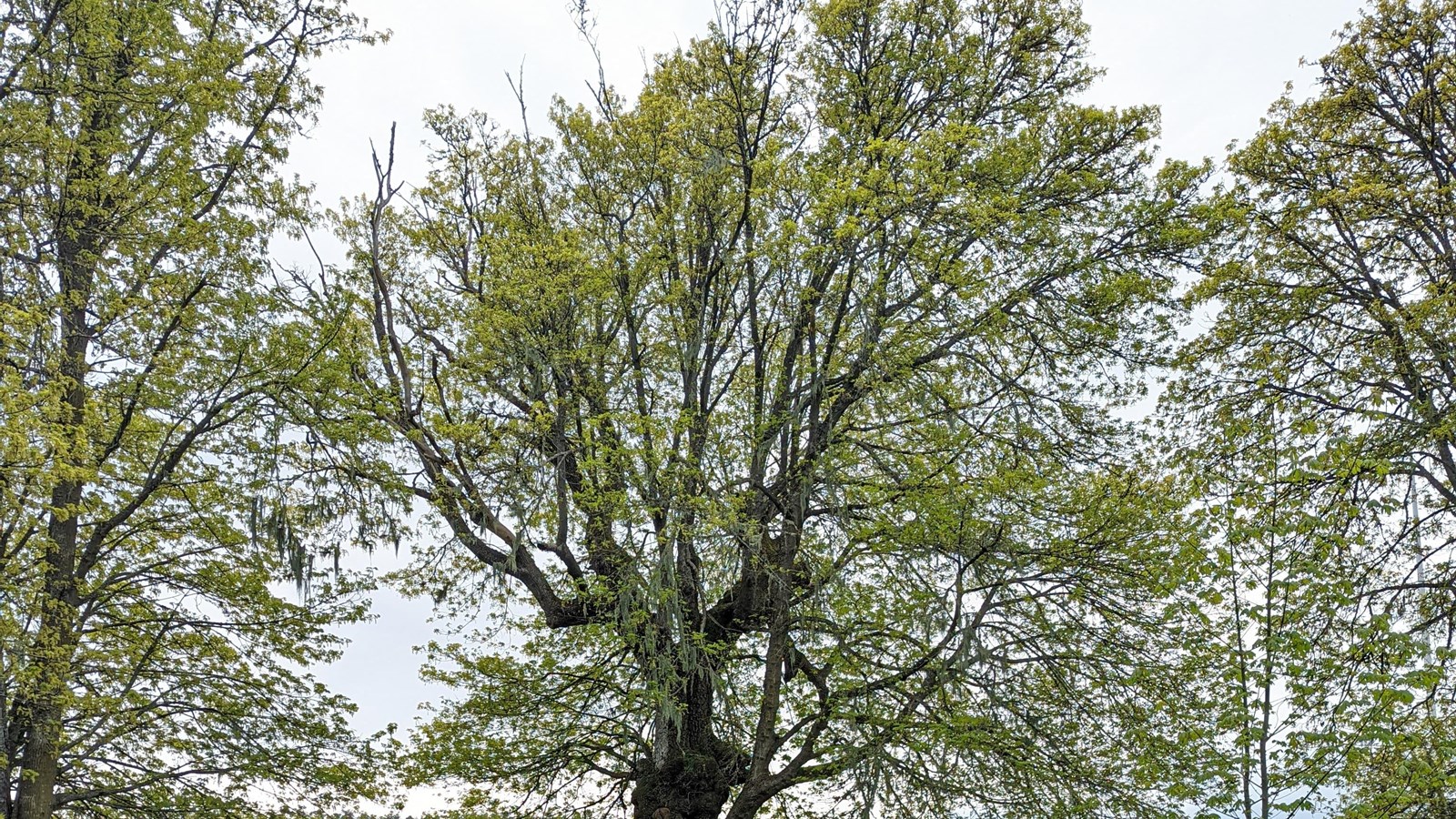Last updated: July 22, 2022
Place
English Camp Bigleaf Maples

Quick Facts
Location:
Friday Harbor
Significance:
Formerly the largest Bigleaf Maple on Earth
Amenities
1 listed
Picnic Table
The oldest Bigleaf maple at English Camp is over 350 years in age, and was once believed to be the largest member of its species in existence. Over time it has gotten smaller due to storm damage that occurred in the 1960s and 1970s. This Bigleaf is actually not a single tree, but a cluster of several trees that have grown together over the centuries. Bigleaf maples are found in coastal lowlands from just south of the Alaska Panhandle in British Columbia, through the western sections of Washington and Oregon. Further south in the warmer, drier California climate, it is located only in moist canyons at increasing elevations in the coast ranges and the Sierra Nevada range. It is most abundant west of the Cascade Divide from southern British Columbia to southern Oregon, from sea level to 3,000 feet (where it reaches its best development).Mature Bigleaf maples growing in the open normally have squat trunks, 3 to 4 feet thick and support massive, spreading limbs. Examples range from 70 to 80 feet high and are nearly as broad. They live an average 200 years or more (as is the case with the English Camp tree). Located in forests among other varieties, Bigleafs will grow straight and tall, as high as 100 feet, with a loose crown of upward pointing branches, often forked or with several trunks close together.Bigleaf maples are easy to recognize from other maples because of their giant leaves (8 to 12 inches across), with five deeply cut lobes. The lobes have smooth margins, except for a few large blunt teeth. Leaf stalks are 6 to 12 inches long and unlike other maples, secrete a milky sap when broken. In late April and early May, while new leaves are opening, clusters of fragrant yellow blossoms (4 to 6 inches long) hang from the boughs. And all year round, thick moss and ferns cling to the rough trunk and lower limbs.
This ancient tree has been a witness to history. When it was a sapling, the English Camp Parade Grounds were the site of a Coast Salish village which had been in existence since time immemorial. Residents of this village built massive longhouses in which they lived and carefully tended to the marine resources of Garrison Bay which helped to sustain their society. When the Royal Marines landed at English Camp on March 23, 1860, at least one longhouse was still standing and likely in recent use; the English disassembled it and used its timber to construct their imperial outpost. After the English left in 1872, the Crook Family began to turn this area into a homestead and center of light industry. In 1866, English Canp became part of San Juan Island National Historical Park, which cares for this site and its landscape.
There used to be two massive Bigleaf Maples at English Camp but in 2012, after years of efforts to save it, one of our Bigleaf Maples died. Park staff had the somber task of cutting the tree down to its stump. Since that time, the tree has regenerated and new growth has occurred where this giant once towered. While it will take centuries for the tree to grow back, this new growth reminds us that trees and forests are living and changing places. What looks like an eternal forest is a dynamic environment, subject to change based on human intervention and environmental factors. This Arbor Day, we salute both of our Bigleaf Maples, which remind us of the important, historic role that trees play in our community!
This ancient tree has been a witness to history. When it was a sapling, the English Camp Parade Grounds were the site of a Coast Salish village which had been in existence since time immemorial. Residents of this village built massive longhouses in which they lived and carefully tended to the marine resources of Garrison Bay which helped to sustain their society. When the Royal Marines landed at English Camp on March 23, 1860, at least one longhouse was still standing and likely in recent use; the English disassembled it and used its timber to construct their imperial outpost. After the English left in 1872, the Crook Family began to turn this area into a homestead and center of light industry. In 1866, English Canp became part of San Juan Island National Historical Park, which cares for this site and its landscape.
There used to be two massive Bigleaf Maples at English Camp but in 2012, after years of efforts to save it, one of our Bigleaf Maples died. Park staff had the somber task of cutting the tree down to its stump. Since that time, the tree has regenerated and new growth has occurred where this giant once towered. While it will take centuries for the tree to grow back, this new growth reminds us that trees and forests are living and changing places. What looks like an eternal forest is a dynamic environment, subject to change based on human intervention and environmental factors. This Arbor Day, we salute both of our Bigleaf Maples, which remind us of the important, historic role that trees play in our community!
